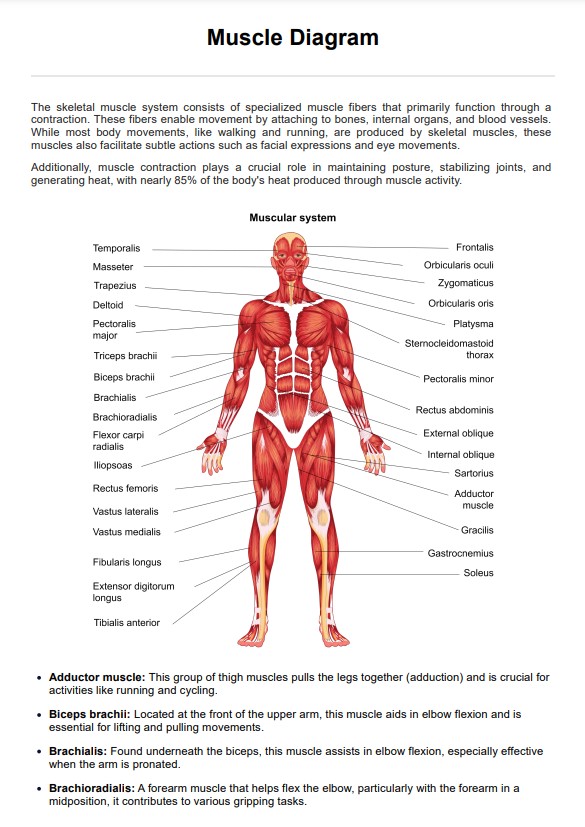The Muscle Diagram serves as a reference that can be used to learn, memorize, or master the anatomy of your arm muscles repeatedly.

Muscle Diagram
Ensure you have a muscle diagram template on hand for educational purposes or clinical settings. Click here for a free, downloadable copy!
Use Template
Muscle Diagram Template
Commonly asked questions
In clinical practice, the Muscle Diagram is intended to serve as an educational tool for patients or a guide when developing the most effective treatment approach for a specific condition.
Yes, there are different types of muscle diagrams, each focusing on a different type of muscle, such as skeletal, cardiac, and smooth muscles.
EHR and practice management software
Get started for free
*No credit card required
Free
$0/usd
Unlimited clients
Telehealth
1GB of storage
Client portal text
Automated billing and online payments











